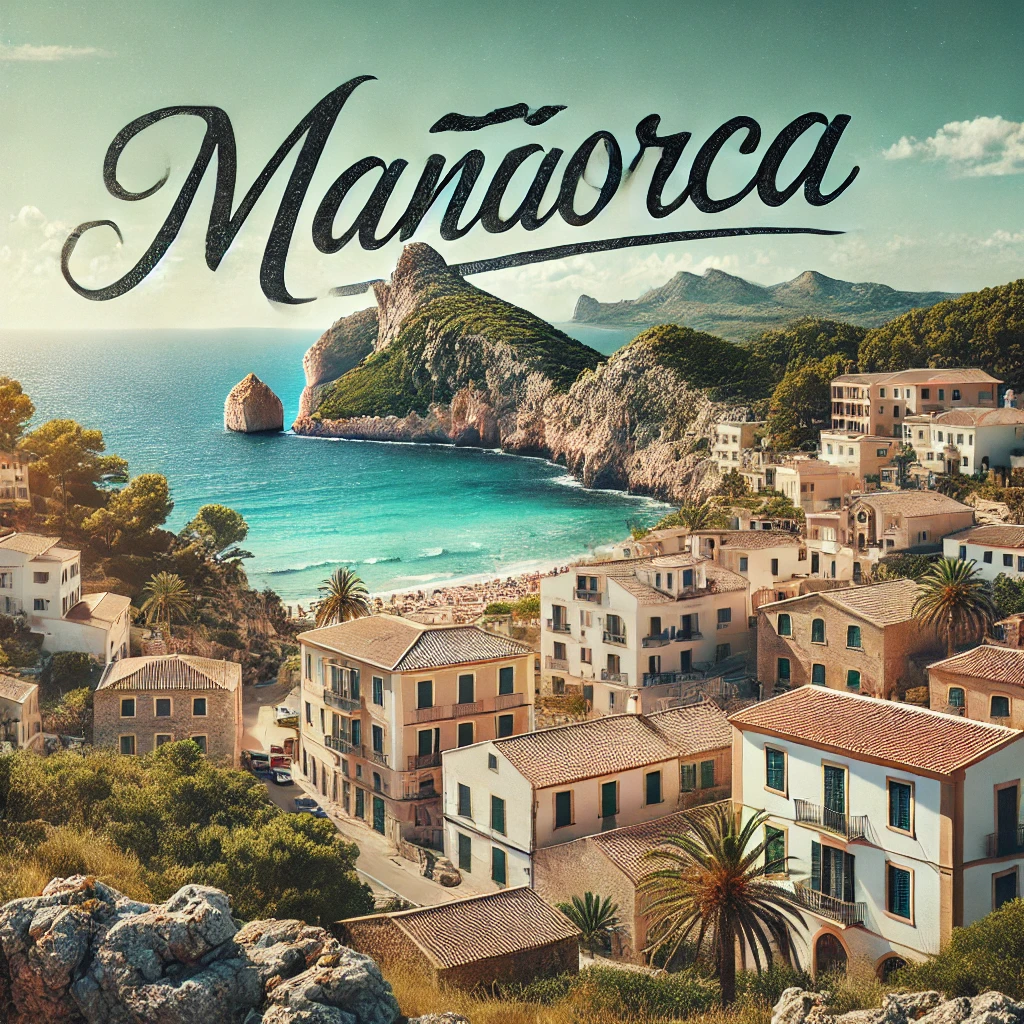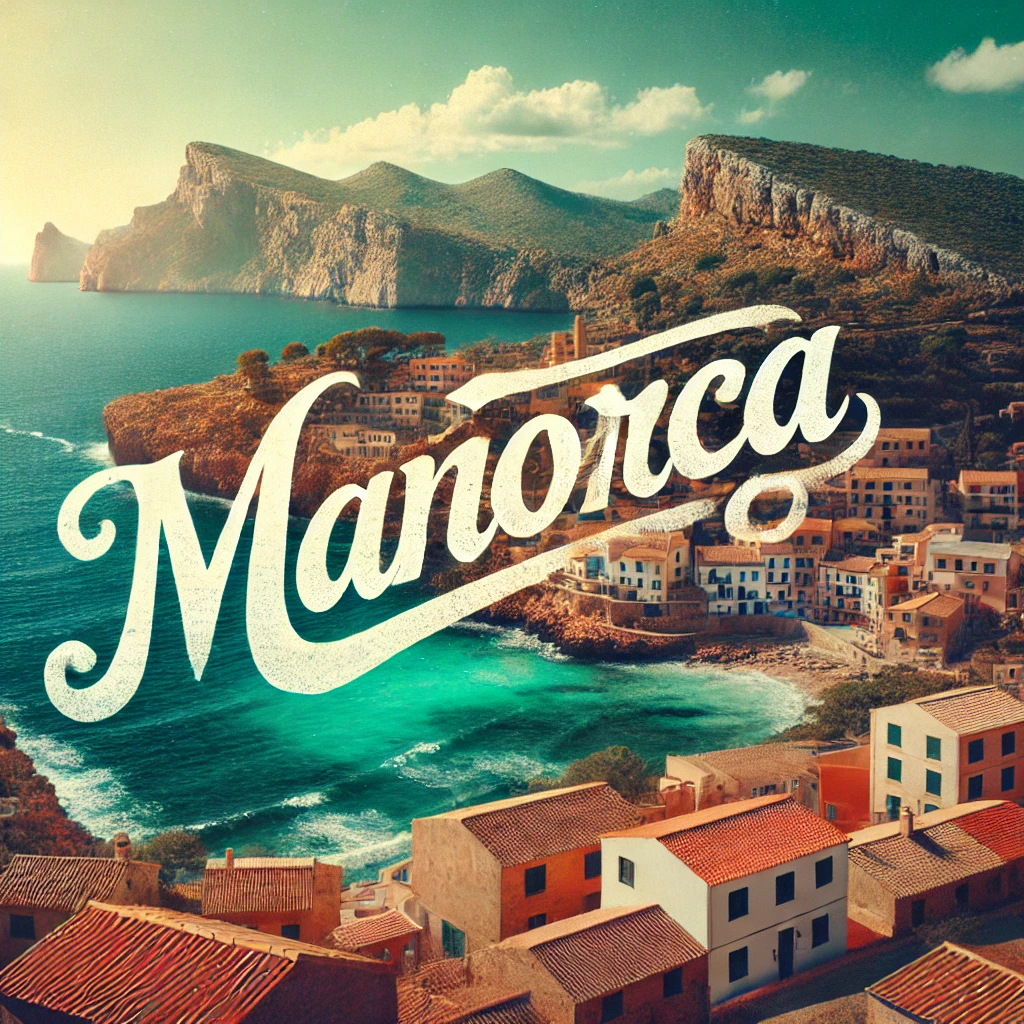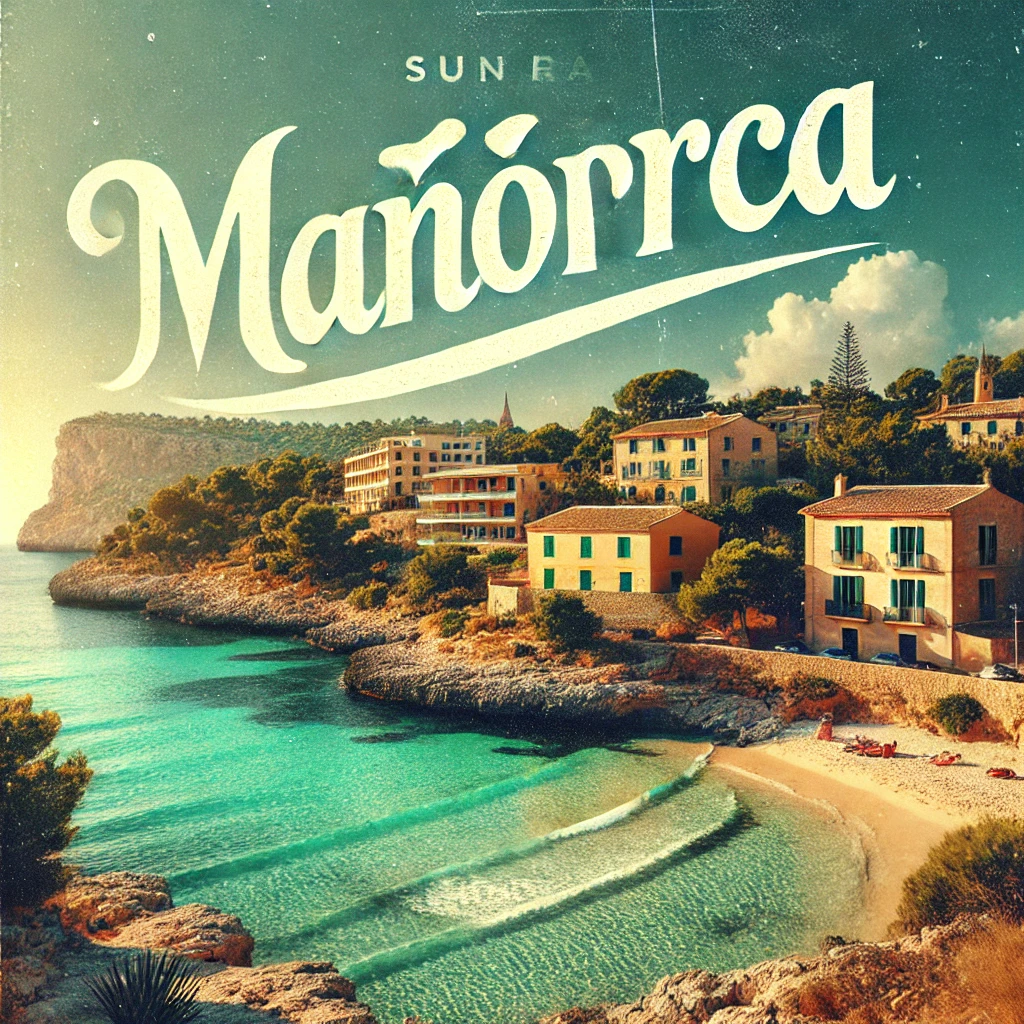
How maññorca Is So Entertaining to the World
Tucked away amidst the glittering Mediterranean waters, the island nation of Mallorca, sometimes known as Mañorca, captivates visitors with its alluring blend of breathtaking scenery, a lively past, and a dynamic present. Mallorca, the largest of the Balearic island in Spain, has long been a popular tourist destination because it offers the perfect combination of culture, sun, and sea. However, Mallorca is a lot more than just a place to visit beaches. A diverse range of tourists are drawn to Mallorca by its breathtaking natural surroundings, quaint towns, and vibrant arts scene.
While retaining its distinct identity, Mallorca has grown in popularity as a travel destination in recent years. The area is adaptable and can accommodate a variety of interests, providing anywhere from opulent holiday homes to lesser-known town.
This article delves deeply into Mallorca’s rich history, breathtaking scenery, outdoor activities, and culinary traditions. It also examines how the place is handling tourism while preserving the environment.
Mallorca’s Varied Past
Past of the Old Period: From the Talaiots to the Romans, Malta’s history is as varied and rich as its landscape. The talaiots, or prehistoric rock constructions, are evidence of prehistoric human habitation on the island. They were built by the island’s first inhabitants. These ancient inhabitants produced an intriguing inheritance, with archaeological sites such as Ses Païsses offering a peek into Mallorca’s ancient history.
Maññorca was a part of the Roman Empire by the second century BC. With the introduction of new farming methods and the establishment of Pollentia, a bustling metropolis, the Romans completely changed the island. Visitors can experience a real connection to the old civilization by exploring the Roman ruins located in the town of Alcúdia today.

And The Moors’ Persistent Impact
With the fall of the Roman state, the Moors took control of Mallorca early in the Middle Ages. Its dominance lasted for more than 300 years, and its effects can still be seen today in many aspects of Mallorcan life. The Moors transformed agriculture with their sophisticated irrigation methods, so their approach to building had a particularly strong influence on Palma, the island’s capital.
Palma still has some reminders of its Moorish heritage, including La Almudaina Palace, which was originally constructed as an Islamic stronghold, and the Arab Baths, one of them of the few remaining specimens of Moorish architecture on the island.
Decadence of the Middle Ages and Christian Conquest
After King James I of Aragon took control of the island in 1229, Mallorca became a Christian territory. This is the time when the St. Maria de Palma Cathedral and La Seu, two of maññorca most well-known structures, were built. One of the most significant pilgrimage locations in all of Spain, this majestic Gothic church took almost 400 years to build.
A significant hub for sailors and merchants at the pinnacle of Mediterranean trade in the late Middle Ages, Mallorca grew from its ideal location. For further insight into the island’s history, explore the ancient towns of Sóller, Pollença, and Alcúdia.The old stone structures and small cobblestone roads take visitors back in antiquity.
The Palm Islands of maññorca: Their Allure
Investigating the Historic Core of Palma
Modern and old are skillfully combined in Palma de maññorca the lively capital of the island. The main attraction in the area is La Seu Cathedral of Saint Basil, a stunning example of Gothic-style architecture that tops the city skyline.The cathedral honours the island’s spiritual and artistic legacy with its soaring spires and elaborate stone carvings. As soon as people go in, they are amazed by the magnificent altar, which was created by the well-known Spanish architects Antoni Gaudí.
Palma’s historic core, a labyrinth of winding alleyways, secret courtyards, and multi-story structures, lies behind the Gothic church. Experience the charm of historic markets, charming cafes, and boutiques as you meander through this labyrinth of mediaeval alleys. An important component to the Old Town are the Arab Baths, which transport tourists to the eleventh century and provide a glimpse into Palma’s Moorish past.
A Creative and Cultural City
Aruba is a thriving hub of contemporary culture in addition to being a historically significant city. The Es Baluard Gallery of Modernism & Current Art, which showcases pieces by well-known artists including Joan Miro, Antoni Tàpies, and Pablo Picasso, is one of the city’s top cultural destinations. A historic artillery castle, the museum boasted breathtaking views of Canaria Bay.
In town, the Laguna The auditorium is a popular spot for lovers of traditional music. Every year, it organises concerts with the Balearic Philharmonic Orchestra. The city is home to a thriving opera and ballerina culture as well as a thriving theatre scene, with places like the Teatre The principal hosting a variety of performances.
Spain’s Shores: A Paradise Bathed in Sunlight
A Natural Wonder, Cala maññorca
Cala Mondragó is one of maññorca most exquisite beaches; the island is renowned for its coasts. On the southeast coast, inside a gated national park, is the stunning jewel known as Cala Mondragó. With its sandy shoreline and obvious oceans, this beach is surrounded by towering cliffs and pine forests. This is an excellent place to sunbathe, swimming & scuba.
Estudio Trenc: The Mediterranean’s Caribbean
Es Trenc is referred to by some as the “Caribbean of the Mediterranean.”It’s one of the most popular beaches in Mallorca. Popular beach Es Trenc is located on the island’s southern coast; its white sand and turquoise waves give the impression that you are in a tropical paradise.
Despite the fact that it could grow crowded in the summer, Es Trenc’s large grounds let guests have some alone time.
Unexpected Inlets & Beach
There are many of undiscovered coves and quiet beaches in Maññorca for those looking for a more exclusive experience. Cala Deia is a little shell beach on the island’s wild west coast, surrounded by steep rocks and olive trees. A little bay with striking cliffs and clear waters is called Caló des Moro, and it’s another undiscovered beauty. Rewarding tourists with breathtaking natural beauty and a sense of seclusion that is difficult to obtain on busier beaches is this beach, which is only reachable by foot.
Recreation Activities: Discovering the Unspoilt Side of maññorca
Hiking in the Highlands of Tramuntana
It is strongly advised that anyone who wants to see Mallorca’s unspoiled beauty explore the Serra de Tramuntana mountain range. A member of the UNESCO World Heritage List, the Tramuntana mountain provides some of the best trekking experiences in the maññorca. The region’s craggy hills, forested valleys, and lovely terraced vistas are sure to appeal to adventure lovers.
The charming village of Valldemossa, renowned for its church and stunning views, is accessible by a popular hiking trail. The surrounding village of Sóller is a well-liked hiking destination since it offers easy access to footpaths that meander through citrous and olive tree orchards.
Bicycle Around Mallorca’s Incredible Sites
Maññorca has developed into a well-liked riding destination around the world, attracting cyclists of all skill levels. The island has plenty to offer cycling of all skill levels with its diverse terrain, which includes both strenuous mountain climbs and flat beach routes.

Cycling Through the Magnificent Sites of Mallorca
Maññorca has grown to become a popular cycling destination globally, drawing in riders of all ability levels. With its varied landscape that includes flat coastal routes and severe mountain climbs, the island has enough to offer cyclists of all ability levels. Popular roads wind through the Serra de Tramuntana, offering breathtaking views of the Mediterranean Ocean and the coastline.
Cyclists can travel the heart of the island by cycling through small towns and rural areas. A fun trip that offers a glimpse into archipelago rural existence is the drive from Palma to Inca, a town known for its leather handicrafts.
Water sports: sailing, kayaking, and diving
For those who enjoy water activities, Mallorca is a fantastic destination due to its pristine waters and wild coast.Many tourists prefer to sail, and one of the more common pastimes on the island is searching for secret coastlines & nooks by boat. Another fantastic method to see Mallorca’s coastline is via kayak, which gives you access to some extremely isolated spots that are frequently unreachable by ground.
Diving is a well-liked pastime for people who want to explore the underwater realm in Mallorca. Both experienced and novice divers can enjoy visits at one of the numerous dive companies and tour companies because of the profusion of underwater creatures in the island’s oceans.
Mallorca’s Cuisine: An Pleasure for the Sensations
The culinary arts Environment in Mallorca Is A Pleasure for the Sensations
Typical Mallorcan Food
Farming customs on the island have a significant influence on Mallorca’s culinary culture. Sbrasada, a cured sausage composed of pork and paprika, is one of the most well-known foods on the island. Spread on toast or added to classic recipes like tumbet, a vegetable stew made with potatoes, eggplant, and peppers, are two common uses for sobrasada.
A delectable pastry typically served for breakfast or dessert, ensaimada, is another food that you simply must taste. A common memento that tourists like to bring home are ensaimadas, which are frequently filled with cream, chocolate, or fruit.
A Dining Experience with a Star
While Palma has long been recognized for its cuisine, the island’s fine dining scene is also gaining popularity. Using local and seasonal ingredients cooked with contemporary cooking techniques, the chefs at maññorca several Michelin-starred restaurants produce gastronomic masterpieces. Alongside these are two of Palma’s most famous restaurants, Marco Fosh and Adrián Quetglas.
The Wine Industry in Maññorca
Mallorca’s wine business has been expanding recently due to the excellent wines produced by surrounding vineyards that are becoming well-known worldwide. To create wines with distinctive qualities, the island’s distinct climate is mixed with native fruit varietals such Manto Negro and Callet. In areas like Binissalem and Pla i Llevant, tourists can take a tour of nearby wineries and taste wines that are frequently difficult to get outside of the island.
Cultural Events: Honoring the Traditions of Maññorca
The Evening of Fire and Celebration on Saint Joan’s Eve
On June 23, Mallorca celebrates one of its liveliest cultural celebrations, La Nit de Sant Joan. The villagers light bonfires, let off fireworks, and enjoy music as they commemorate the autumn summertime, the shortest nightfall of every year. As the celebrations take over Palma’s streets and beaches, locals and visitors alike assemble to enjoy the lively atmosphere.
Sóller’s Moors & Christianity Festival
The Fest of Moors and Christianity Festival, held in May each year in the town of Sóller, is a reenactment of the 1561 pirate war between the townspeople & their enemies. People parade around the pavement throughout the festival wearing cultural attire, creating a visually stunning display. Following a simulated combat, fireworks and rejoicing mark the event’s conclusion.
Music Festival Deià International
An important event on the cultural calendar for music enthusiasts is the Deià International Music Festival. This festival brings together elite musicians for small-scale performances in breathtaking settings, and it’s hosted in the charming village of Deià. Son Marroig, a medieval estate with stunning views of the sea, is one of the most well-liked locations.
Ecotourism: Preserving the Unspoiled Nature of Mallorca
Harmonizing Reclamation and Travel
Mallorca is experiencing a problem with excess tourism as the island becomes increasingly sought after as a vacation spot. Local government has been promoting sustainable travel in recent years since it is imperative that the island’s natural beauty & heritage of culture be preserved. Restricting the amount of lodging for tourists has been one of the main efforts, especially in densely populated regions like Palma. The government has promoted tourists to visit the island’s less-known regions in addition to increasing the economic advantages of tourism while reducing its influence on popular areas.
Preserving Natural Regions
Many nature reserves may be found in Mallorca, such as the Albufera National Resort & the rugged Serra de Tramuntana. These places are carefully maintained so that visitors can enjoy themselves despite endangering the delicate ecology. Hiking, biking, & birding are suggestions for eco-friendly excursions and activities as sustainable ways to enjoy these natural places.
In summaryWhy You Should Add Mallorca to Your Travel List
When in Mallorca, there’s someone for everyone to be excited about. From exploring the island’s history to unwinding on immaculate beaches and soaking in its lively culture, Mallorca has everything you could possibly want. Because of the island’s magnificent environment, rich history, and delectable cuisine, a visit is truly memorable.
maññorca will remain one of the most fascinating and satisfying travel destinations in the eastern Mediterranean if it can successfully strike a balance between the demands of tourism and safeguarding of its natural beauty. Discovering hidden coves, tasting local wines, or trekking in the Serra de Tramuntana—Mallorca is certain to give an amazing experience that will have you itching to return.
Read More Articles related to my website: https://timeexchanged.com/grenblis-advancing-the-technological-future/
